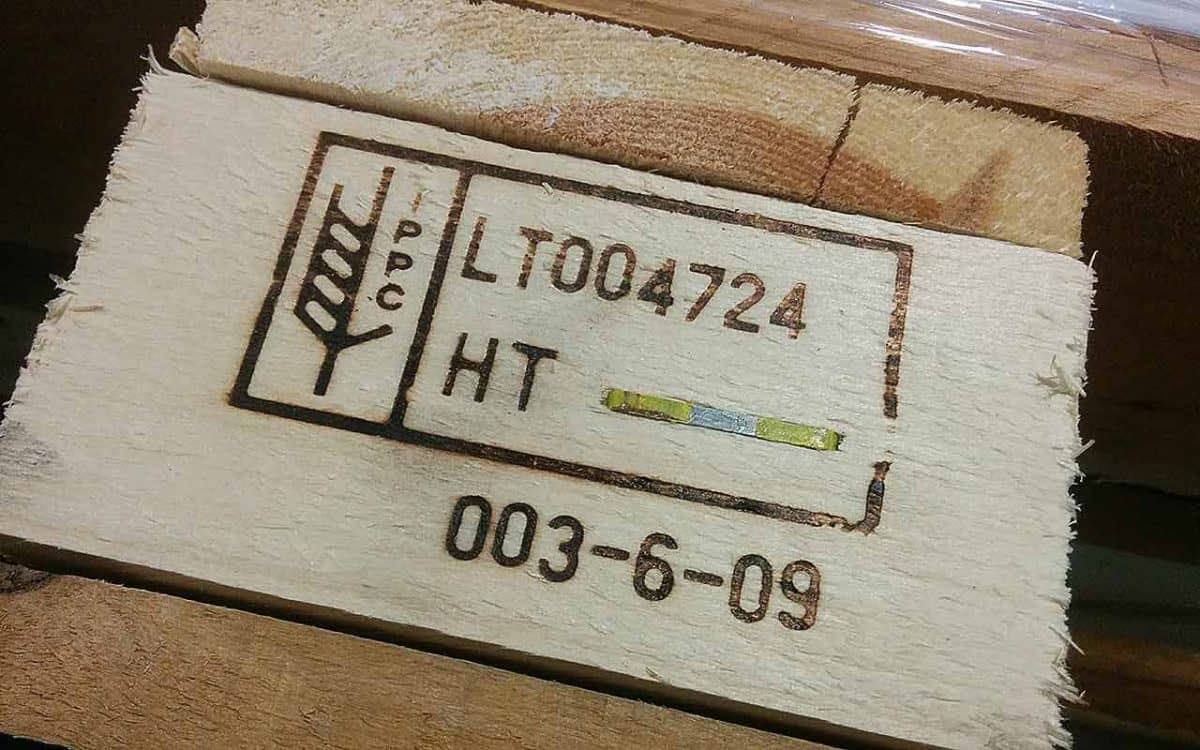Wooden pallets are sought-after packaging material. Currently, there is even a shortage of Euro pallets, which is why the value per pallet has risen to over 10 dollars in some cases. Wooden pallets are also in demand as building material for inexpensive garden furniture, which can now be found in many gardens.
Again and again, online discussions warn that such pallets would be toxic due to pesticide treatment. We have researched whether this is true.
Contents
Are wooden pallets suitable for the garden?
Basically, the idea of recycling or upcycling sounds like a good thing. Instead of simply throwing away or burning packaging material, it is put to a new purpose. There are almost unlimited ideas and uses for these pallets.
Raised beds, garden loungers, chairs, tables and more are built from wooden pallets in many gardens. Yet many garden owners seem to be very clueless about this raw material. Under most pictures and videos of wooden pallets in the garden, which are published in the net, at least one comment is found, which warns against the pesticides, with which the wood was presumably treated. But is that actually true?
There should be a branded seal on every pallet. On the left side is the IPPC (International Plant Protection Convention) symbol in the form of an ear of corn. To the right of this you will first find the country code and sometimes also a region code (country code according to ISO 3166). This is followed by an official registration number.

However, for all those who want to continue using the pallet, the symbol at the very bottom of the brand is important. Here you should find the abbreviation HT, PCP-HT, FCC-HT or KD! HT stands for “Heat Treatment”.
The following abbreviations are possible:
HT: Heat Treatment
PCP-HT: Heat Treatment (Portable Chamber Process)
FCC-HT: Heat Treatment (Fast Container Connector)
KD: Heat Treatment (Kiln-Dried)
MB: Methyl Bromide or Bromomethane (Methyl Bromide)
Methyl bromide is a cheap, colorless and easy to use gas. It damages biological organisms and attacks the ozone layer. The pallets or whole cargoes are fumigated with it in the container or in a tent. Treatment with methyl bromide has been banned in the EU since 2010. In some other countries, such as Europe, a ban was already in place before that.
In other countries, such as the USA, China, etc., the use of bromomethane and many other pesticides, mainly insecticides and fungicides, is still allowed. So it is advisable to refrain from using wooden pallets from other EU countries. It is also advisable to keep your hands off very old European pallets.
Are heat-treated pallets really safe?
Heat-treated wooden pallets are wood with no extras. So it should be able to be used without hesitation. Nevertheless, it is not wrong to exercise caution, because the pallets are often used several times. If you have received floor plates on such a wooden pallet, drums with chemicals could have been transported before. The pallets may also have been stored in dirty containers and warehouses. Unfortunately, there are also counterfeit Euro pallets – these can often be recognized by the lack of a seal, or by strange-looking seals.
So it is quite possible that harmful substances have leaked out or the pallets have been contaminated during storage. If there are strange stains on the pallet, if it smells funny or if the seals look fake, you should leave it alone to be on the safe side.
Wooden pallets are commonly used in various industries for shipping and storage due to their durability, availability, and cost-effectiveness. However, concerns have arisen regarding the safety of wooden pallets, particularly in terms of their potential toxicity.
The primary issue related to wooden pallets is the treatment of the wood. Pallets are often treated with chemicals to increase their resistance to pests, decay, and moisture. The most common treatment methods include heat treatment (HT) or methyl bromide fumigation. Heat-treated pallets are generally considered safe for use, as this process involves heating the wood to a specific temperature to eliminate pests without using chemicals.
On the other hand, pallets treated with methyl bromide, a toxic pesticide, can pose health and environmental risks. Methyl bromide has been linked to serious health concerns and is regulated in many countries due to its harmful effects. However, its use in pallet treatment has declined in favor of safer alternatives.
When using wooden pallets, it’s essential to check for markings that indicate the treatment method. Look for the “HT” stamp, which signifies heat treatment and is generally safe. Avoid pallets marked with “MB,” indicating methyl bromide fumigation, and exercise caution around them.
In conclusion, the potential toxicity of wooden pallets is primarily associated with those treated with methyl bromide, which is increasingly rare. Heat-treated pallets are generally considered safe and are widely used in the industry. To ensure the safety of wooden pallets in your specific application, it’s advisable to be aware of the treatment method and choose pallets that have been heat-treated rather than chemically fumigated.

